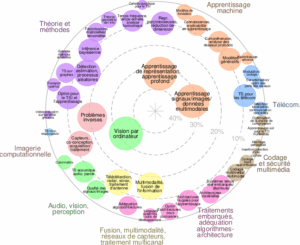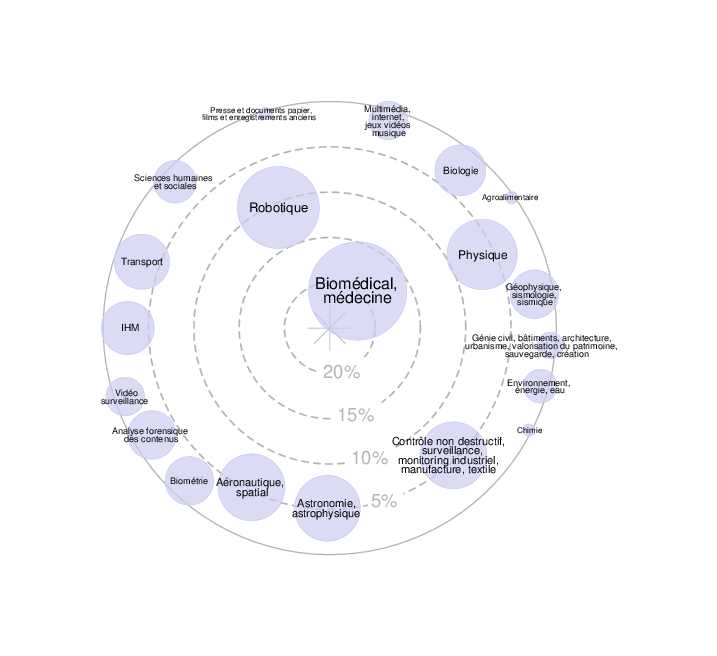Context
Remote sensing refers to the use of satellite or airborne sensors to classify, detect and study Earth phenomena, playing an important role in Earth sciences and climate phenomena understanding. Amongst the various imaging modalities, Synthetic Aperture Radar (SAR) have emerged as a promising technology, offering qualitative measurements independantly of the acquisition conditions (scene illumination, presence of clouds).
Yet, SAR processing requires specific handling. In fact, SAR data are complex-valued data and suffer from a strong non-Gaussian multiplicative noise, namely the speckle. Key enhancement tasks such as despeckling and super-resolution are typically formulated as optimization problems, yielding variational methods [2]. These traditional approaches offer theoretical guarantees and interpretability but require careful hyperparameter tuning and can be computationally intensive due to slow convergence.
Furthermore, hand-crafted variational algorithm can struggle to balance speckle removal with detail preservation in SAR’s complex noise environment.
On the other hand, recent learning-based approaches [7] demonstrate superior performance but depend heavily on large labeled datasets and substantial computational resources for training.
Unrolled neural networks represent a hybrid approach at the interface between optimization algorithms and deep learning tools. These architectures are deep neural networks derived from optimization algorithms, whose quality and reliability are guaranteed. Iterative algorithms (ISTA, ADMM, Forward-Backward) are unrolled over a finite number of iterations, creating a neural architecture whose parameters are learned from data. Initially proposed for sparse representation estimation, this approach has been extended to other data processing problems [3,1,4,5]. Unrolled architectures benefit from the flexibility of deep neural networks while maintaining interpretability derived from their underlying optimization algorithms.
Furthermore, they require significantly less training data to achieve performance similar to classical deep learning methods.
However, these methods present specific challenges. The unrolled architecture, whose structure is constrained by an iterative algorithm, does not guarantee efficient parameter learning compared to conventional architectures and need specific training strategies [6].
Project Summary
This internship aims to contribute to the design of efficient architectures and training strategies for unrolled deep neural networks, with specific application to SAR data processing.
The student will train an Unrolled Neural Network built upon a variational algorithm for SAR image despeckling.
The research will focus in finding efficient training strategies given the underlying structure of the optimisation problem.
In addition to the methodological contributions, the proposed approaches will be evaluated on real SAR images from the Sentinel-1 and TerraSAR-X missions.
The position can be started anytime from February 2025 for a duration of up to 6 months. The internship will be hosted at LISTIC, Université Savoie Mont Blanc.
Candidate Profile: M2 or engineer diploma in one or more of the following fields: applied mathematics, signal and image processing, computer science. The candidate should have good programming skills.
Contacts and Application procedure: Students should send a detailed CV and short cover letter to Guillaume Ginolhac (guillaume.ginolhac@univ-smb.fr) and Yassine Mhiri (yassine.mhiri@univ-smb.fr)
References
[1] Nawel Arab et al. “Unrolled expectation maximization algorithm for radio interferometric imaging in presence of non gaussian interferences”. In: Signal Processing (2025), p. 110035.
[2] Gilles Aubert and Jean-Fran.ois Aujol. “A Variational Approach to Removing Multiplicative Noise”. In: SIAM Journal on Applied Mathematics 68.4 (Jan. 2008), pp. 925–946.
[3] Carla Bertocchi et al. “Deep unfolding of a proximal interior point method for image restoration”. In: Inverse Problems 36.3 (2020), p. 034005.
[4] Hugo Brehier et al. “Deep unrolling of Robust PCA and Convolutional Sparse Coding for stationary target localization in through wall radar imaging”. In: 2024 32nd European Signal Processing Conference (EUSIPCO). IEEE. 2024, pp. 1881–1885.
[5] Rassim Hadjeres, Christophe Kervazo, and Florence Tupin. “Generating Synthetic Data to Train a Deep Unrolled Network for Hyperspectral Unmixing”. In: 2024 32nd European Signal Processing Conference (EUSIPCO). IEEE, Aug. 2024, pp. 1861–1865.
[6] Benoit Malézieux, Thomas Moreau, and Matthieu Kowalski. Understanding Approximate and Unrolled Dictionary Learning for Pattern Recovery. Feb. 2022.
[7] Inès Meraoumia et al. “Multitemporal speckle reduction with self-supervised deep neural networks”. In: IEEE Transactions on Geoscience and Remote Sensing 61 (2023), pp. 1–14.





